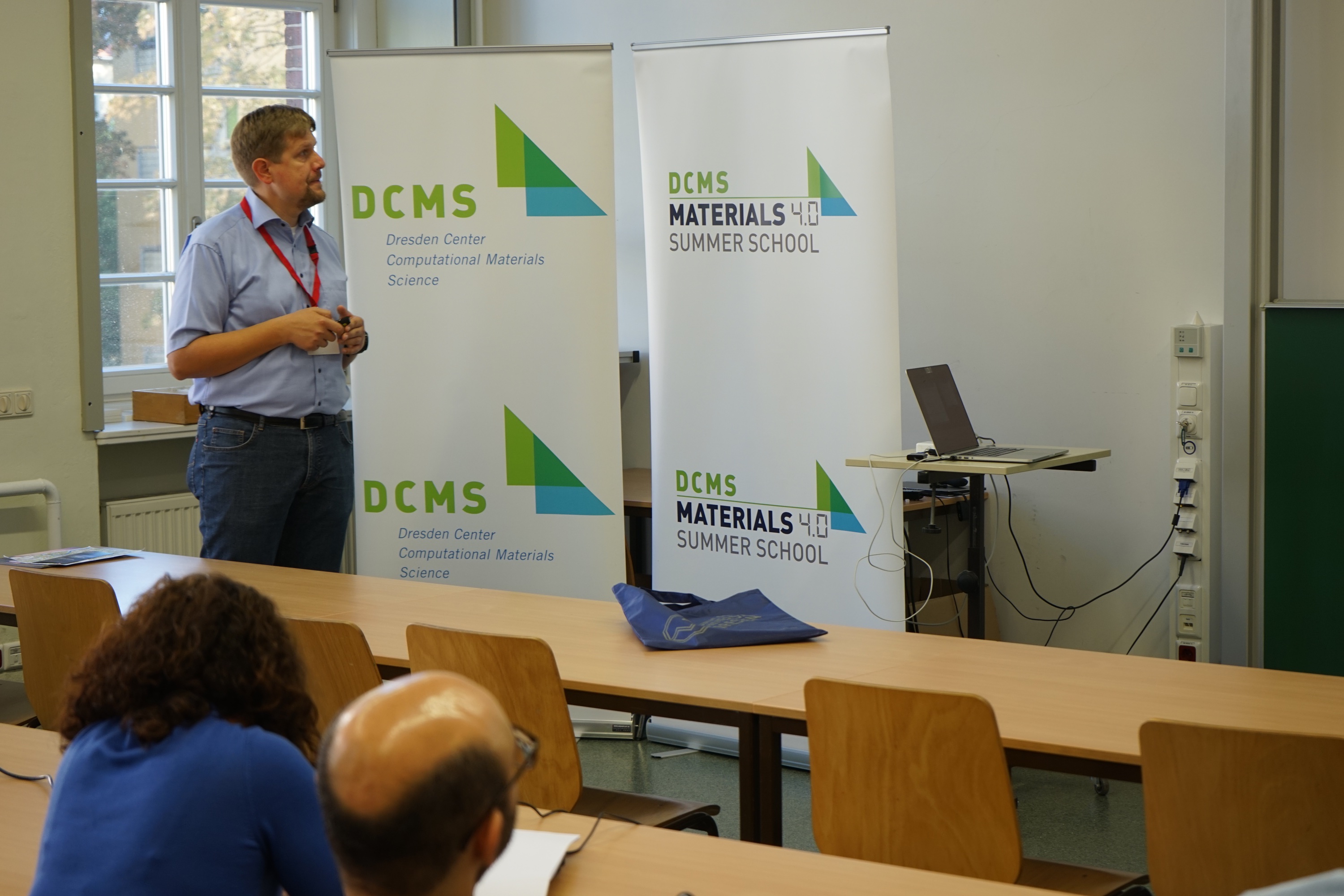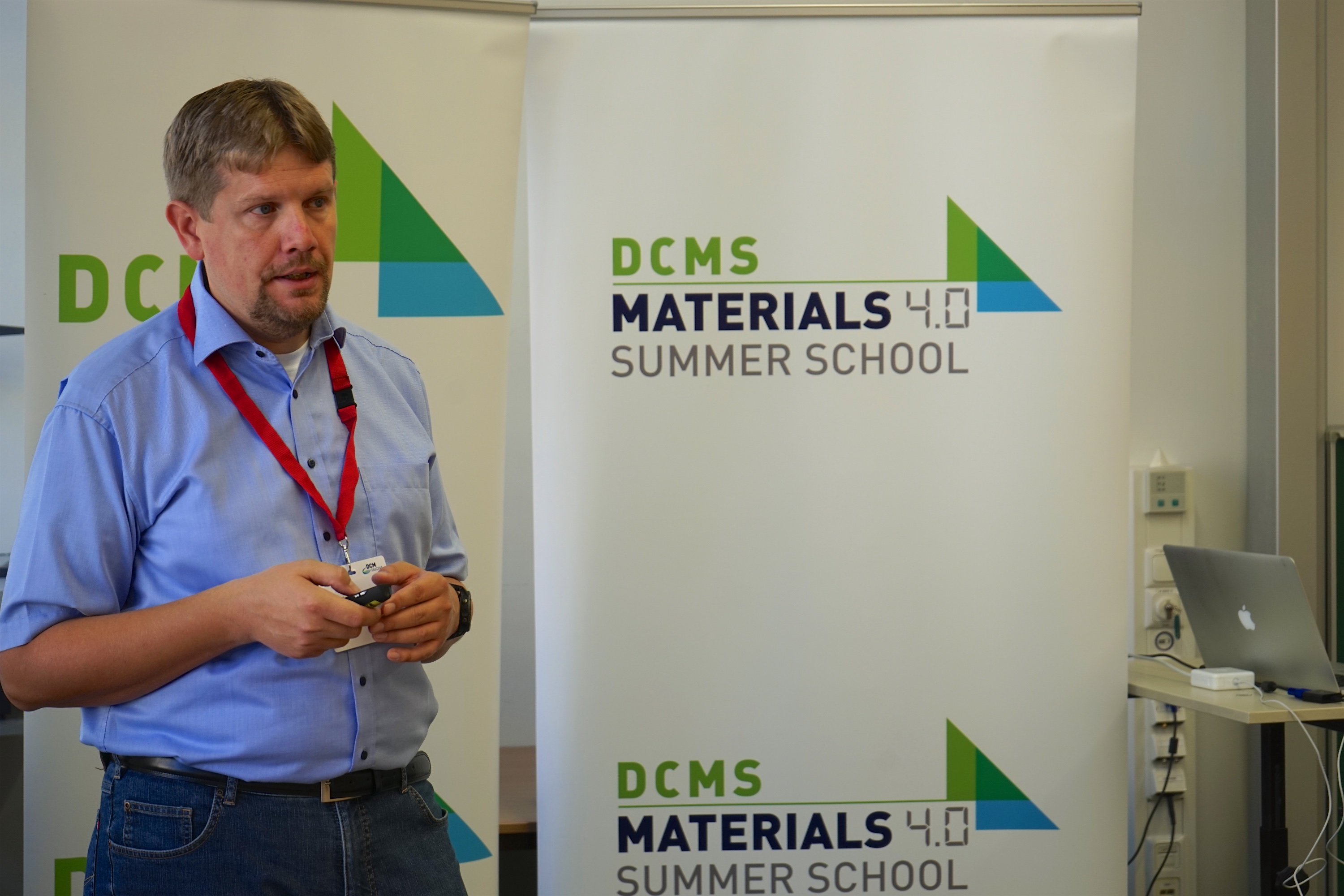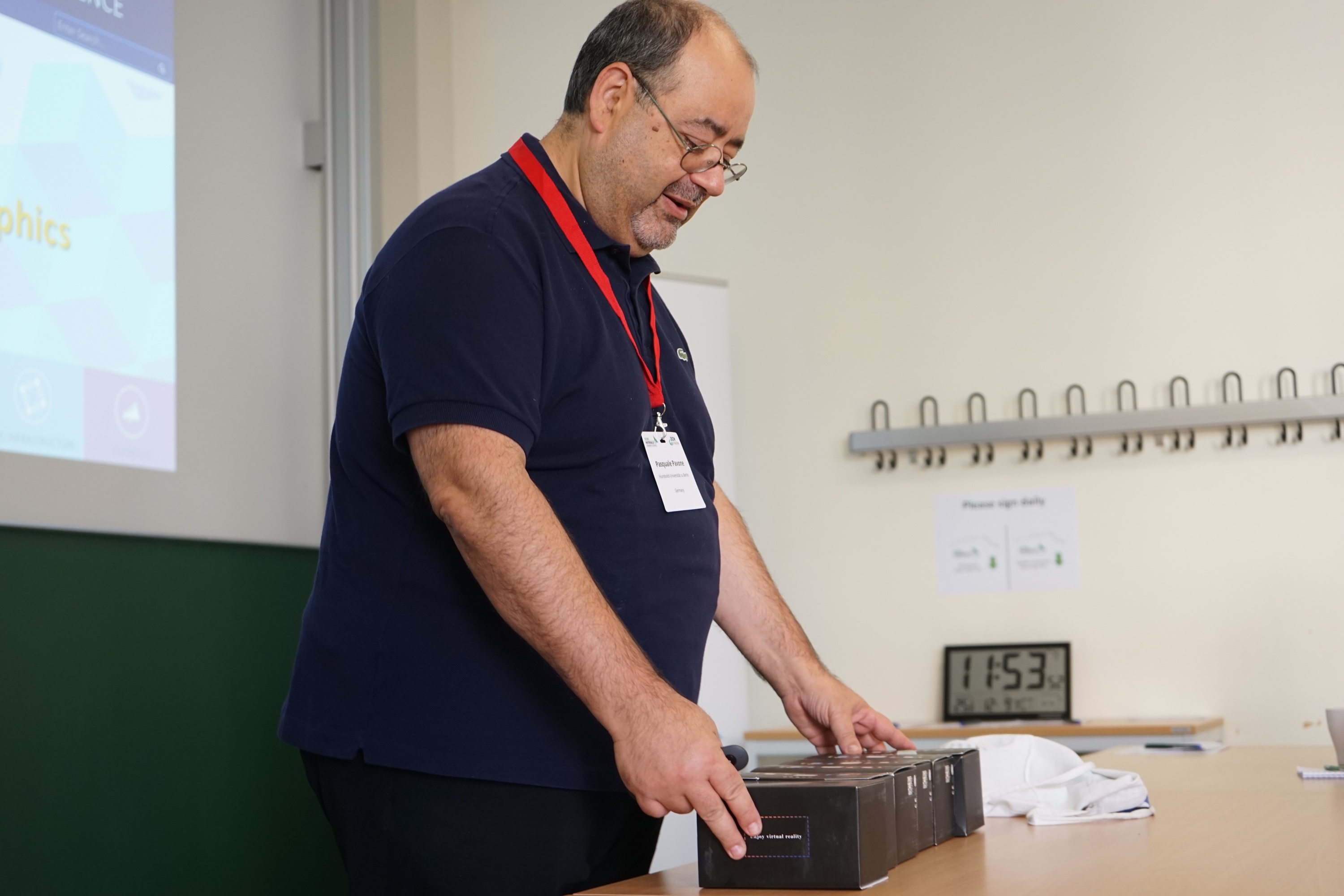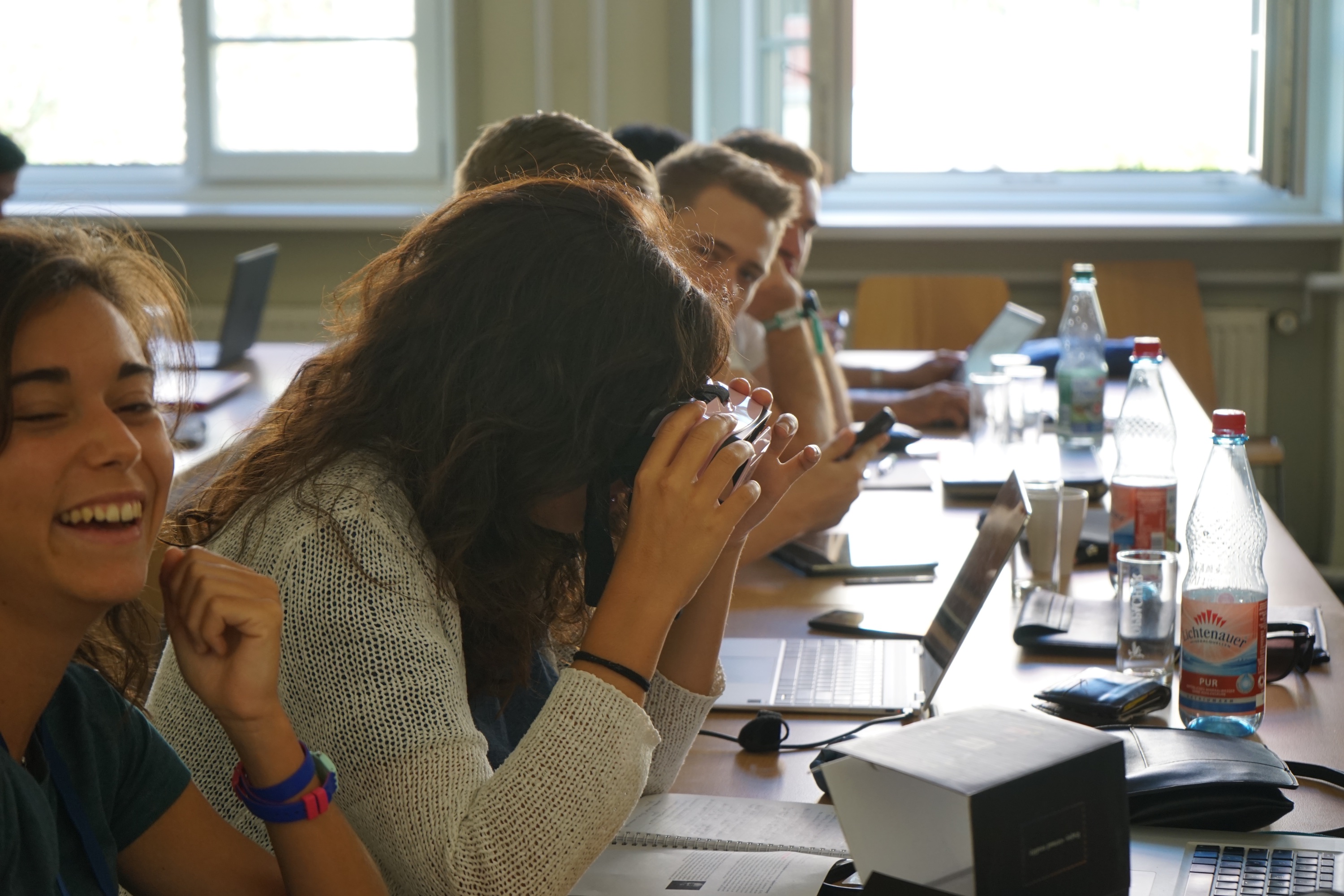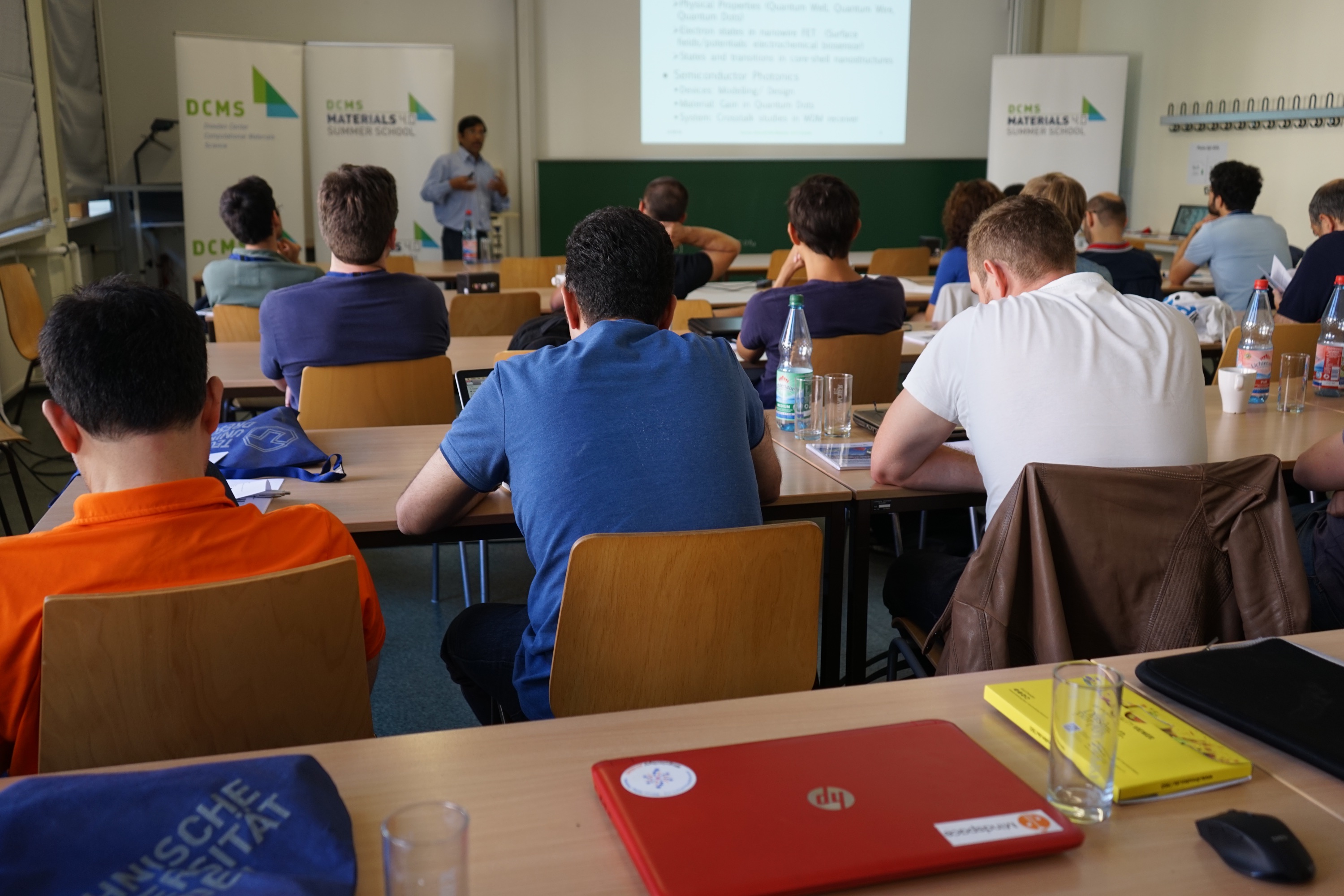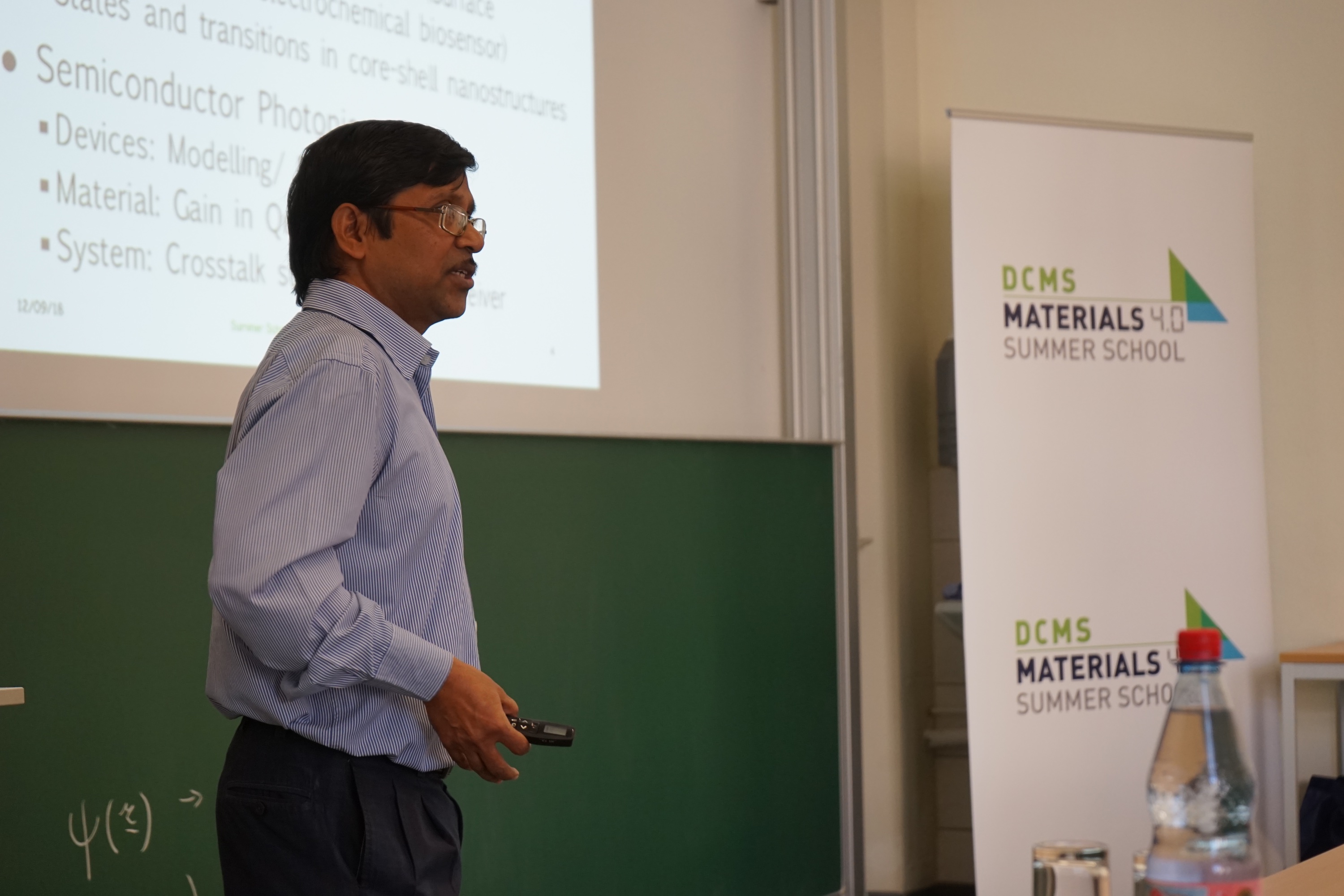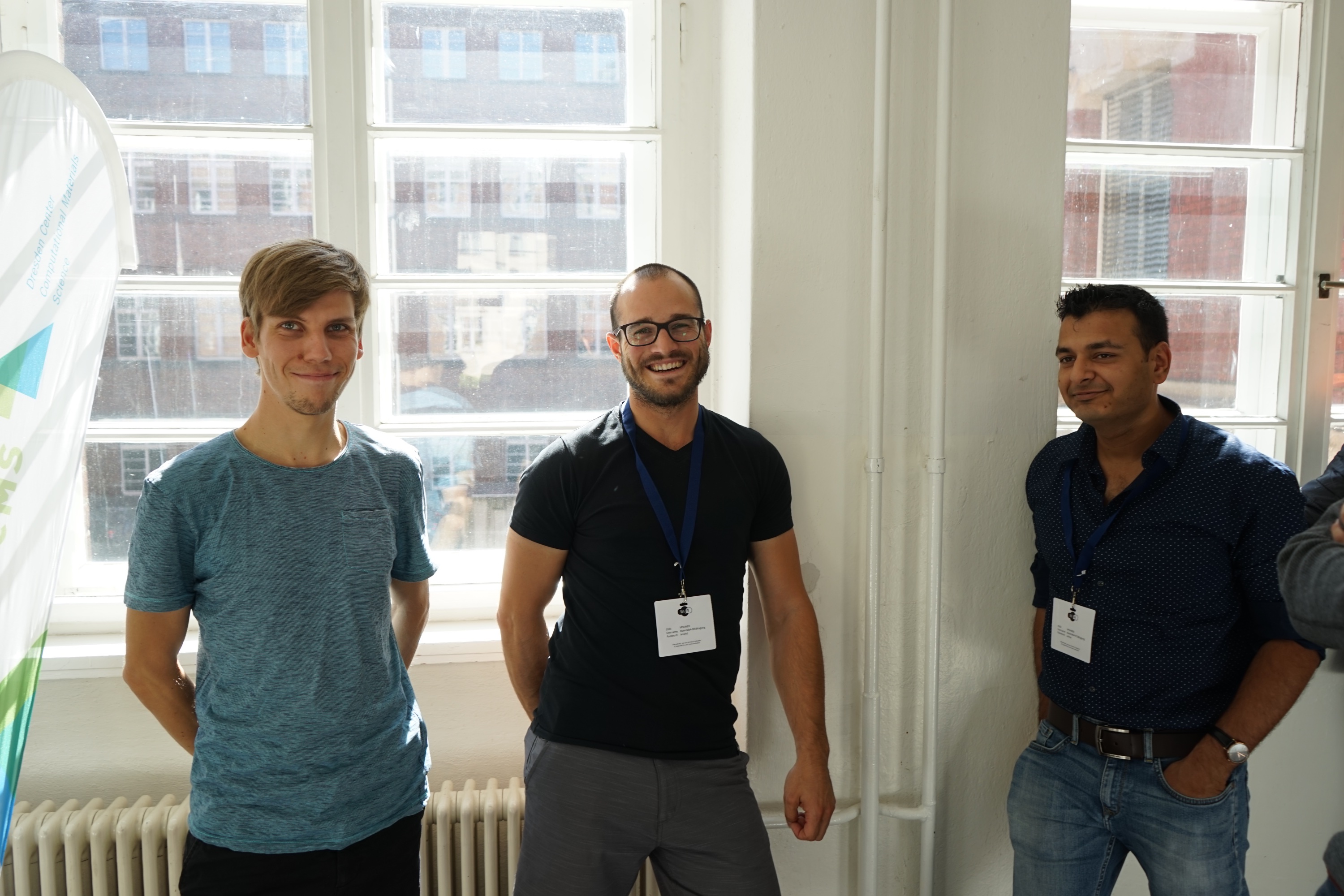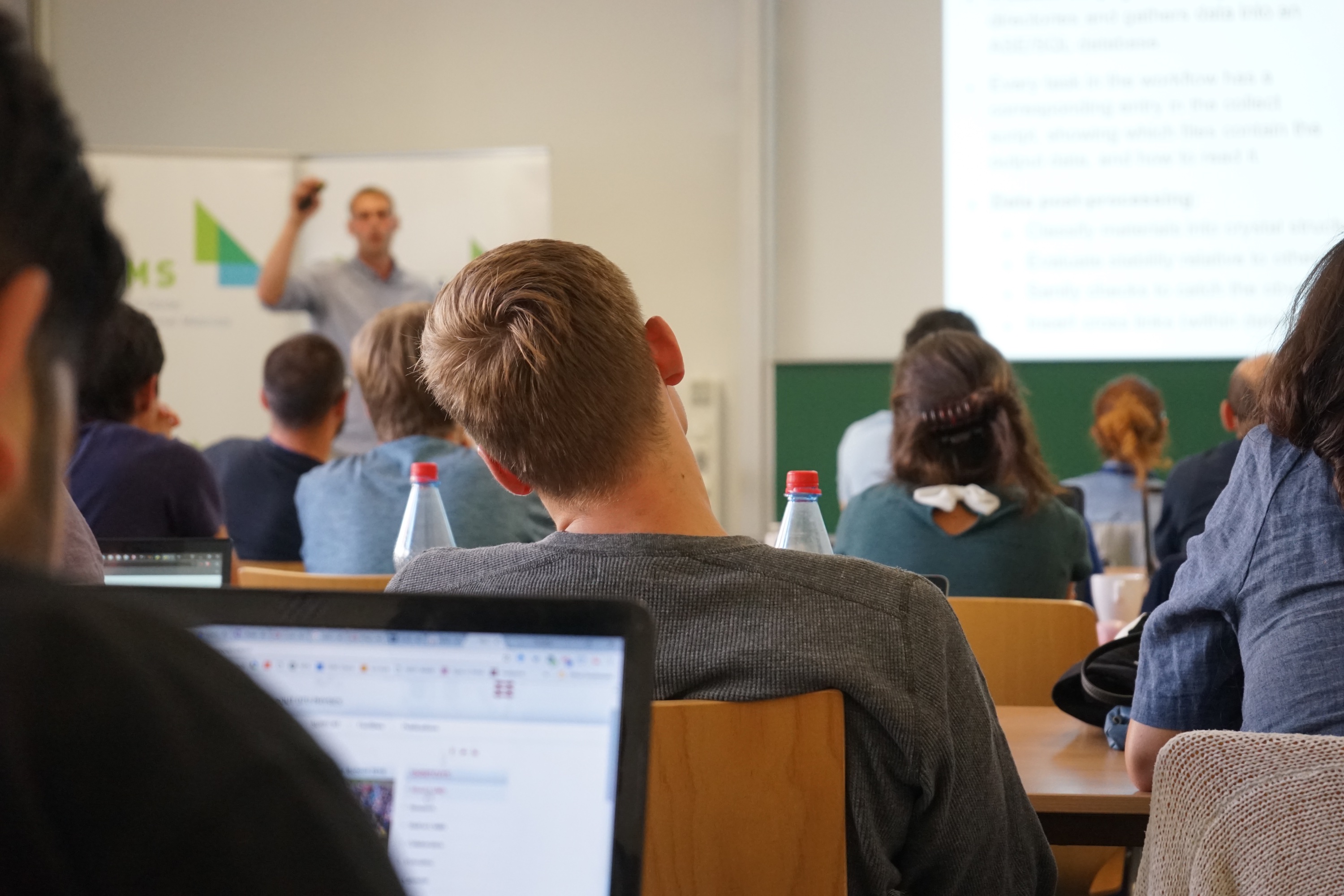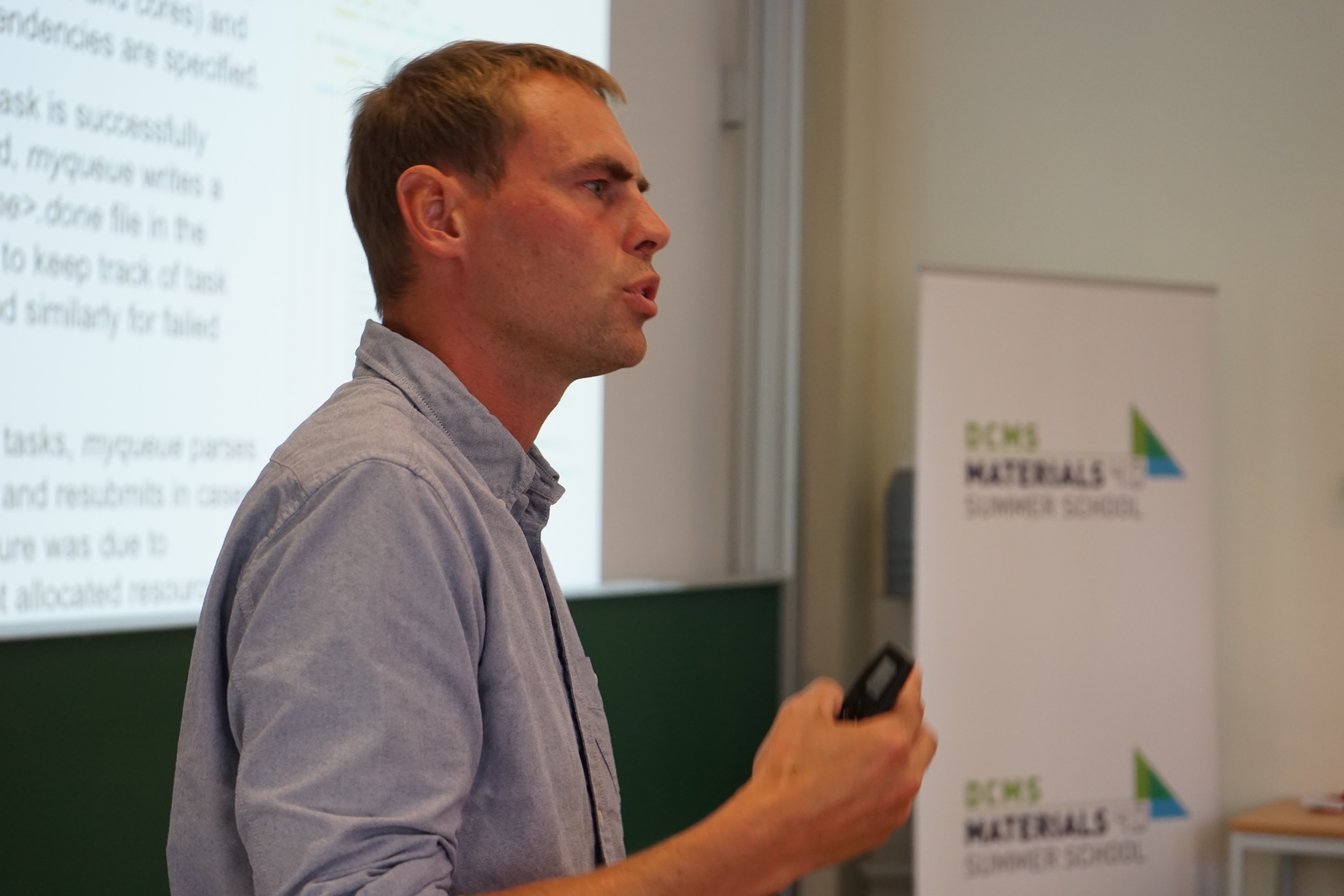DAY THREE
The third day started with Prof. Jörg Behler from the Georg-August-Universität in Göttingen giving a very interesting lecture on high dimensional neural network potentials. After an exciting introduction to machine learning techniques, including pitfalls and potential artefacts, he showed how ML techniques can be applied to constructing atomistic potentials relying on simple but very flexible mathematical terms. Prof. Behler highlighted that such approaches are, due to their construction principles, are applicable with high accuracy to a wide range of systems.
The Novel Materials Discovery Laboratory Center of Excellence – known as NOMAD – was in the focus of the second lecture of the day, given by Dr. Pasquale Pavone form the Humboldt Universität Berlin. NOMAD tackles the issue of Big Data in Materials Science, starting from a materials data repository, the Materials Encyclopedia, which provides the results from more than 18 million DFT calculations. In addition to Big Data Analytics to identify the appropriate materials for specific applications, NOMAD also provides tools for visualizing materials and their properties – even in 3 dimensions using a smartphone.
The day was concluded by Kristian Sommer Thygesen from the Technical University of Denmark. He showed how a computational materials database of two-dimensional materials can be built based on computationally heavy DFT calculations. Kristian outlined the workflow behind such a database and how one can identify trends and correlations in the discovery of novel materials. His talk will be continued on day four, when he presents his work on high-throughput discovery of new light-absorbing semiconductors. Stay tuned!




